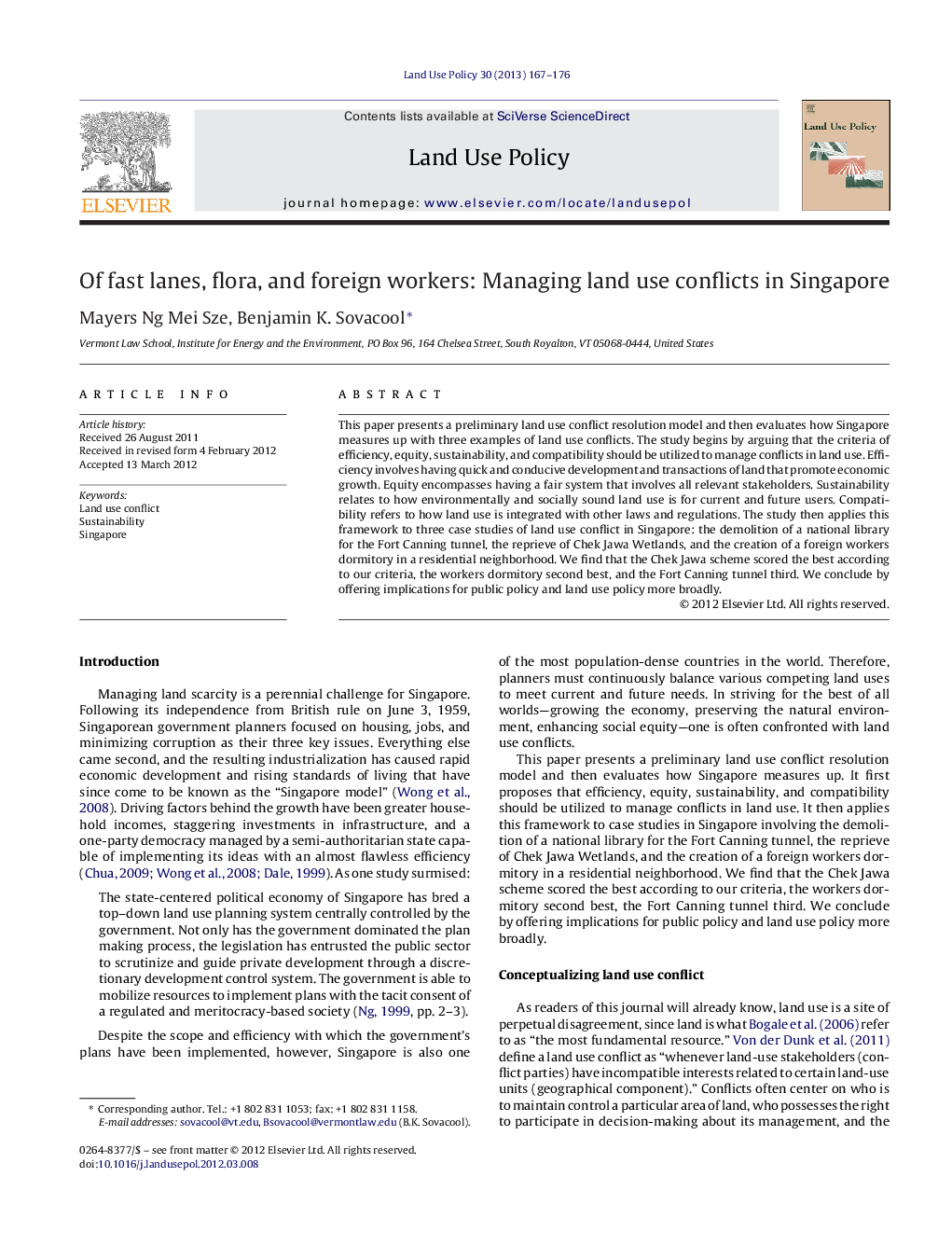| Article ID | Journal | Published Year | Pages | File Type |
|---|---|---|---|---|
| 92978 | Land Use Policy | 2013 | 10 Pages |
This paper presents a preliminary land use conflict resolution model and then evaluates how Singapore measures up with three examples of land use conflicts. The study begins by arguing that the criteria of efficiency, equity, sustainability, and compatibility should be utilized to manage conflicts in land use. Efficiency involves having quick and conducive development and transactions of land that promote economic growth. Equity encompasses having a fair system that involves all relevant stakeholders. Sustainability relates to how environmentally and socially sound land use is for current and future users. Compatibility refers to how land use is integrated with other laws and regulations. The study then applies this framework to three case studies of land use conflict in Singapore: the demolition of a national library for the Fort Canning tunnel, the reprieve of Chek Jawa Wetlands, and the creation of a foreign workers dormitory in a residential neighborhood. We find that the Chek Jawa scheme scored the best according to our criteria, the workers dormitory second best, and the Fort Canning tunnel third. We conclude by offering implications for public policy and land use policy more broadly.
► The criteria of efficiency, equity, sustainability, and compatibility should be utilized to manage conflicts in land use. ► These criteria can be used to assess three examples of land use conflict in Singapore: the demolition of a national library for the Fort Canning tunnel, the reprieve of Chek Jawa Wetlands, and the creation of a foreign workers dormitory in a residential neighborhood. ► The criteria suggest that the Chek Jawa scheme scored the best, the workers dormitory second best, and the Fort Canning tunnel third.
